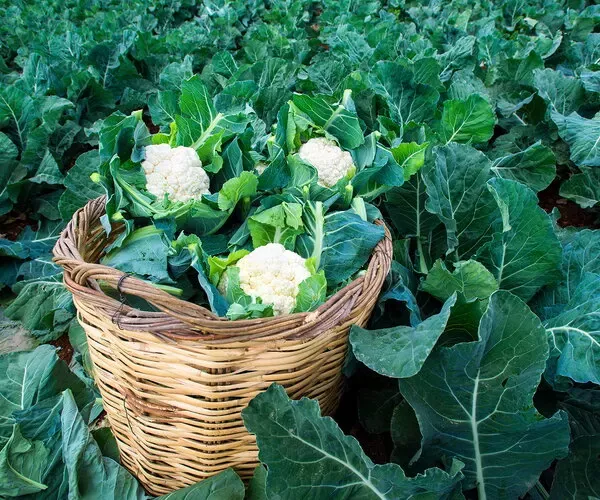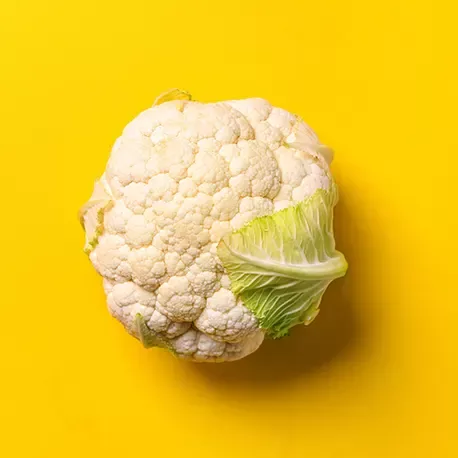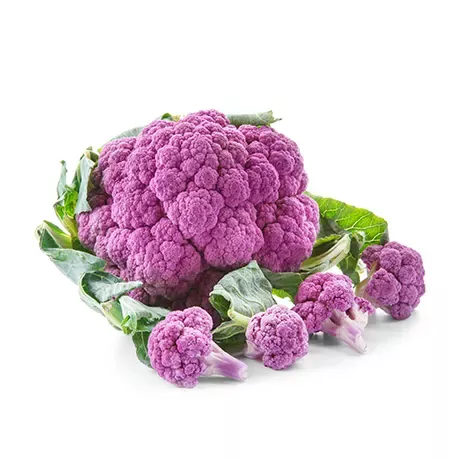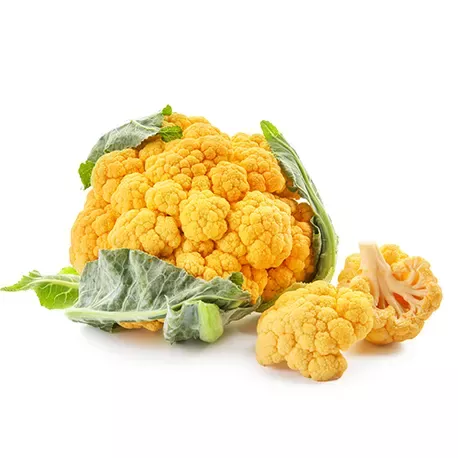Cauliflower
Cauliflower is one variety of brassica vegetables. Its edible part is the stem which forms a floret - from this, as time passes, the yellow flowers appear. An average serving of cauliflower covers the daily demand for vitamin C.

Cauliflower can easily be eaten raw, but also cooked or baked. However, do not cook it for a long time, as even half an hour of heat treatment deprives it of 70% of its nutrients.
As it cooks, a characteristic pungent, irritating smell escapes from the cauliflower, this is due to the presence of volatile sulphur compounds which are found in all brassica vegetables. However, this is nothing to worry about - these sulphur compounds improve the condition of skin, hair and nails.

SPECIES
White floret varieties
Similar in size and shape. When choosing these varieties, you may want to pay attention to the uniformity of the plant, as well as the absence of brown discolouration. When you buy at the market, choose cauliflowers with some leaves still on. They will last longer and won't wilt too quickly.
Purple florets varieties
They do not differ in shape or taste from the conventional varieties. Violet varieties can be sprinkled with a little lemon juice just after cooking to retain their attractive colour. As with red cabbage, this will prevent them from losing their colour.
Orange floret varieties
These varieties contain beta carotene, which is a provitamin A. To improve its absorption, you can gently brush the cauliflower with olive oil or a little butter.
NUTRITIONAL VALUE
Nutritional value per 100g of cauliflower:
ENERGY VALUE
PROTEIN
FATS
CARBOHYDRATES
VITAMIN C
POTASSIUM
Cauliflower FOR YOUR HEALTH!
Proven anti-cancer effect
Due to the presence of numerous antioxidant compounds, cauliflower can prevent the development of certain types of cancer. There are well-documented studies confirming these properties. Scientists have identified a compound called sulforaphane as having particularly effective anti-cancer effects.
For a shapely figure
Cauliflower is a very low-calorie vegetable. When it's cooked al dente, not only will it be crunchy, but it will also help satisfy hunger for longer. This vegetable goes very well as an ingredient in balanced diet salads, as well as in lean poultry dishes.
For beautiful skin
Cauliflower's content of B group vitamins, vitamin C and sulphur compounds makes it a worthwhile veggie for people who care about their complexion. Vitamin C is involved in the production of collagen - a protein responsible for the skin's uniformity, while B vitamins speed up epidermal regeneration. Sulphur, on the other hand, is a building block for hair and nails.
Good for the cardiovascular system
The antioxidants in cauliflowers have an anti-inflammatory effect. This is important in the prevention of cardiovascular diseases. The fibre, in turn, supports proper lipid metabolism and thus prevents the development of atherosclerosis.
PRODUCTION MAP
Poland is the third cauliflower producer in the European Union. Nearly 80% of plantations are concentrated in the Małopolskie, Lubelskie, Kujawsko-Pomorskie, Łódzkie and Mazowieckie Voivodships.






